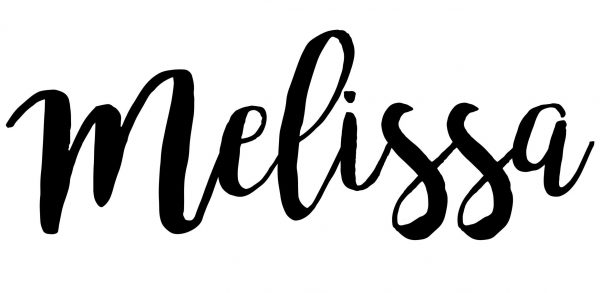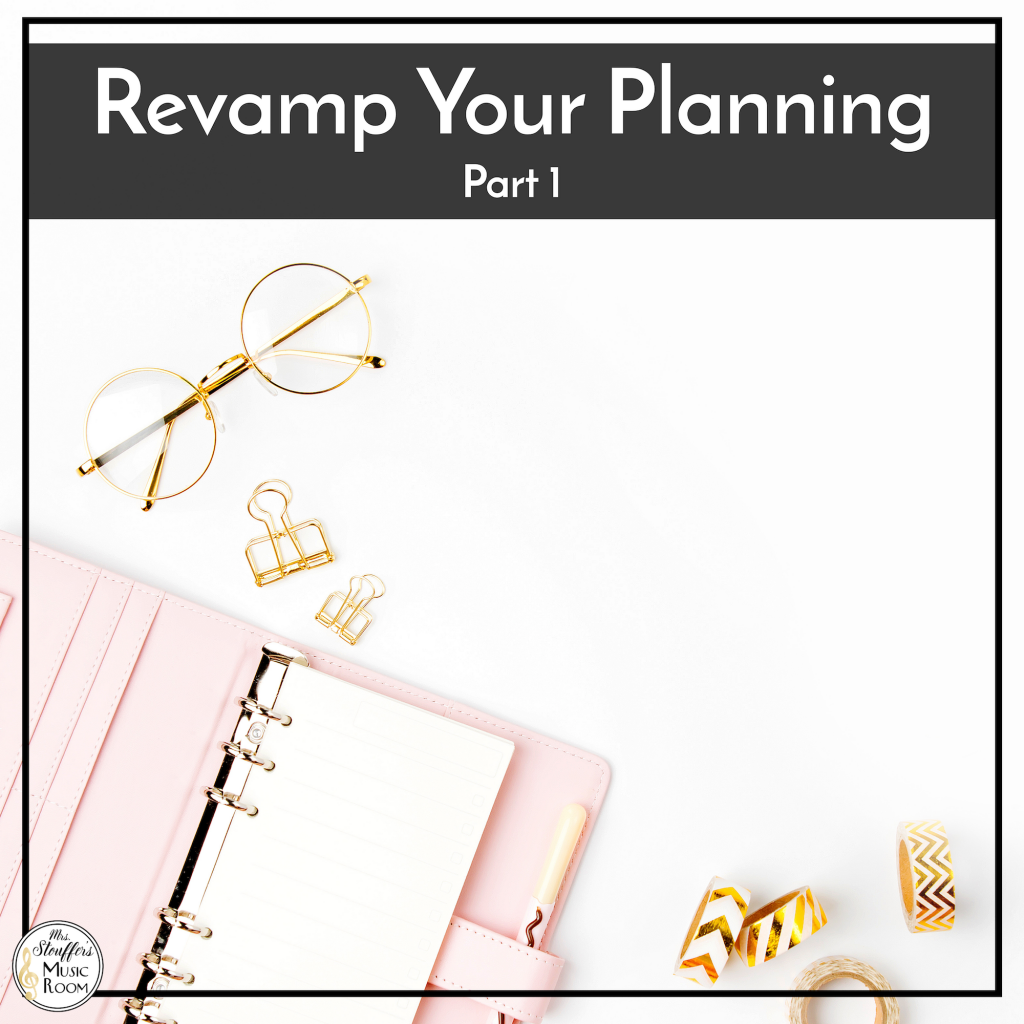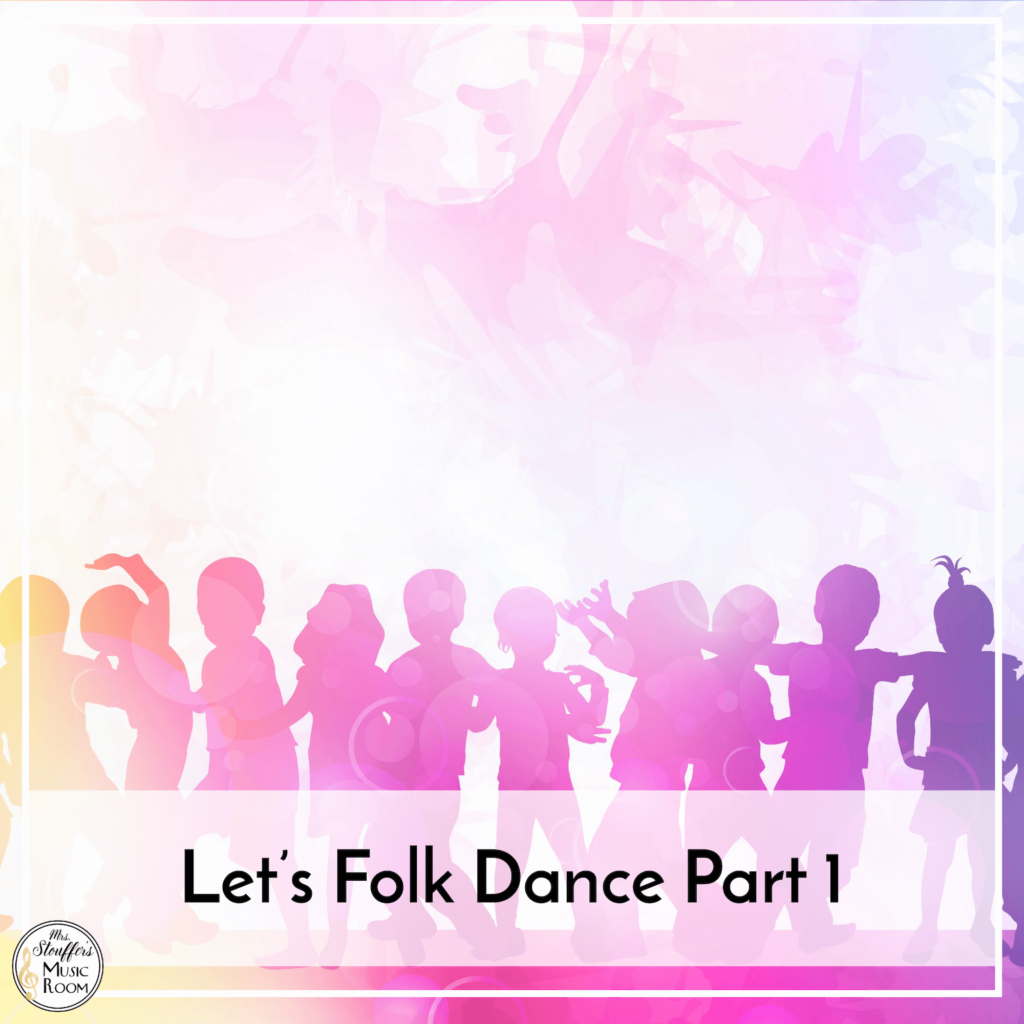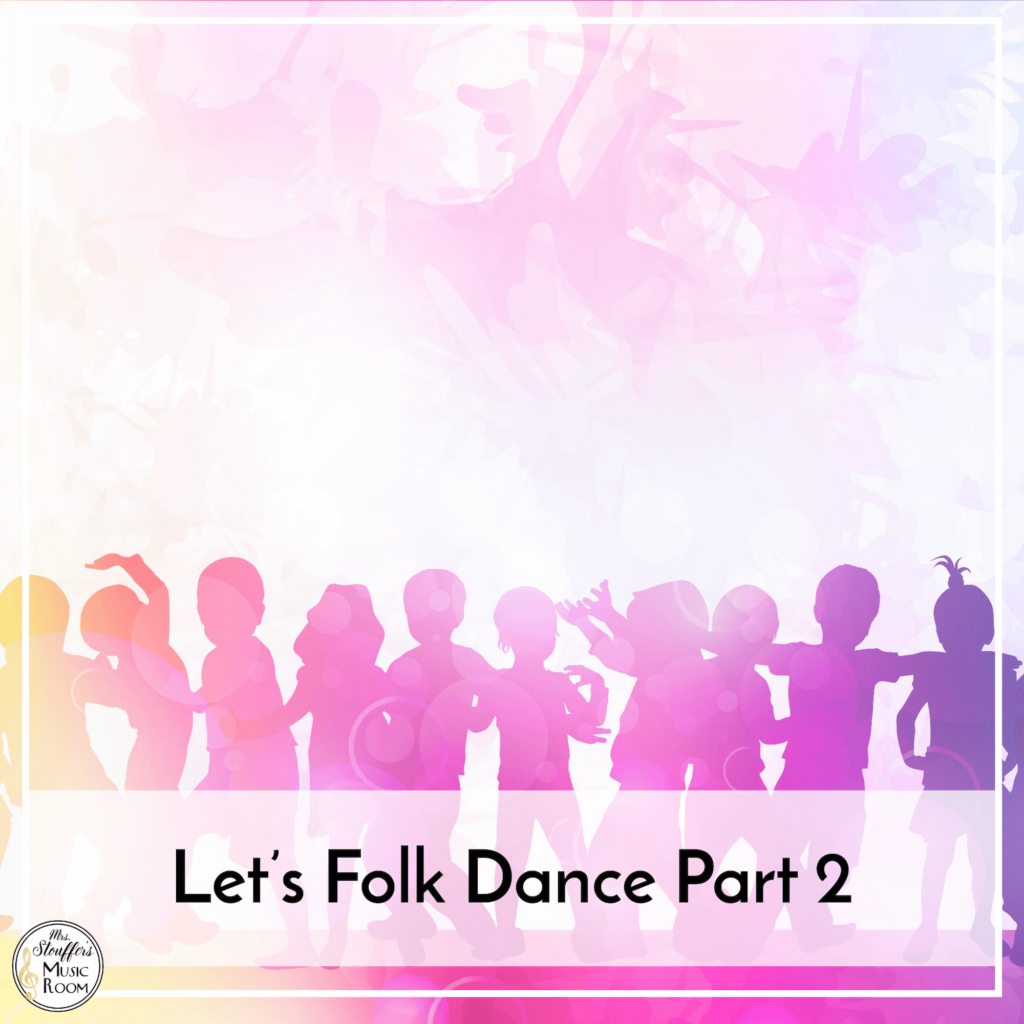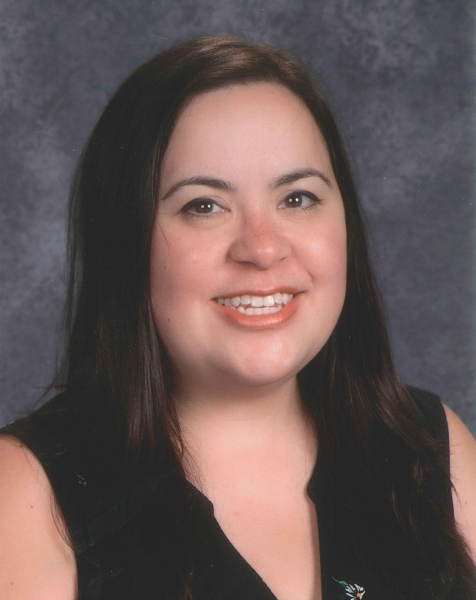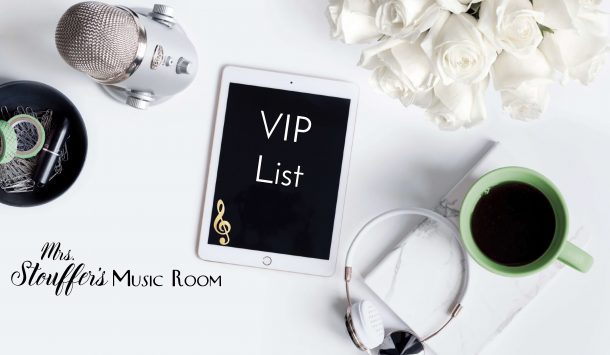This 3-part post was drawn from my presentation for the Michigan Kodaly Educators in September of 2019.
Missed Part 1 on common solfege questions and older beginners?
Part 2 talks about prepare-present-practice and solfege terms for kids.
If all you took in your undergrad was a single elementary music class, you may feel confident in using solfege, but you’ll quickly find out that your 2 activities you remember don’t get you very far.
I had this problem in the beginning too. Then I learned about different ways to extend learning and practice to keep kids (and myself) from getting too bored with one or two activities.
In part 3, we’ll look at the following:
- Getting the most out of one song
- Solfege Practice Activities (with 30+ examples)
- Music Manipulatives
The devil’s in the details, so read on!
Getting The Most Out Of One Song
Have you ever taught you students a song and game and then wondered where to go from there?
This is a really common problem for music teachers. The next you know, you end up teaching hundreds of songs in one school year!
You can get more out of one song by extending the learning with some of these tricks:
- Sing
- Sing in parts
- Split in group
- Dictation backward
- Sing backward
- Sing certain notes in your head
Solfege Practice Activities (30+ Examples)
See part 2 for more discussion on the teaching theory of the Practice stage.
The practice stage is where you’ll spend most of your time with a concept. Practicing a concept should cycle through different types of practice elements to develop well-rounded knowledge and skills.
In this section, we’ll look at examples of these for each practice type. Some activities require more explanation than I provided.
Check out my TeacherPayTeachers store for more helpful products or come to one of my presentations to see these in action.
Reading
For reading activities, students need to practice the solfege concepts using notation. Just reading gets boring over time, so you can mix it up with some of these ideas.
- Ss are given a paper with two columns. One column is the notation for 3 songs and the other is their titles mixed up. Ss must match them.
- Find your pattern – Fill a piece of paper with several patterns. Students put a token on the correct pattern. (Post Office type game)
- Read from tone ladder (T notates, Ss sing)
- Read from stick notation (See Rocky Mountain)
- Read from staff (1, 3, or 5 lines)
- Read known 4 beat motives from board or cards
- Combine, T 4 beats ahead, or have Ss read in 2 different groups
- Rhythm BINGO
- Ss are given a paper with two columns. One column is the notation for 3 songs and the other is their titles mixed up. Ss must match them.
- Find your pattern – Fill a piece of paper with several patterns. Students put a token on the correct pattern. (Post Office type game)
- Read sample (or all) of known songs and identify.
Writing
In writing practice, the students aren’t creating new pitch patterns, but they’re focusing on the practice of notating pitch patterns given to them in different ways.
- Notate
- Whiteboard/Smartboard
- Individual white board
- Laminated staff paper
- Dry erase pocket with stuff in it
- Felt board
- Bingo chips
- Erasers – worksheets for writing, tracing, copying
- Yarn staff line and manipulative of some kind
- Add rhythm stems to note heads (don’t forget slanted beams)
- Transcribe known songs from sol fa to staff
- Dictation Levels
- Level 1: Only solfa
- Level 2: Stick notation with solfa
- Level 3: Pitches only on staff
- Level 4: Pitch & rhythm on staff
- Dictation (A good sequence to help them get there.)TIP: Practice each step alone before you try the whole thing!
- Listen
- Use hand signs & sing solfa
- Inner hear, listen and sign
- Notate in solfa
- Put on staff
- Notation race
- Notate from hand signs from the teacher or a partner
- Change the note: rewrite a pattern by changing one note. Ss sing new pattern, then a new S changes a note, etc.
- Write the room
- Stick & Solfa
- Solfa only
- Staf (copy)
- Decode from a different presentation EX: Write on staff from solfa, write on staff from stick, write solfa from staff, etc.
- Manipulative barrier – partners sit next to each other – create a pattern and say, partner writes.
Partwork
Partwork is an often forgotten thing to practice, but the ability to perform using solfege with multiple parts is vital to building true independent musicianship.
- T sings, Ss echo (text, neutral syllable, solfa)
- T sings neutral, Ss echo in solfa
- T plays on instrument, Ss echo
- T sings, Ss echo 4 beats later
- Dialogue songs: Lemonade, Quaker Quaker, Do You Know the Muffin Man, Doggie Doggie, Ducks & Geese
- Call & Response Songs: Amassee, Just from the Kitchen, Mary Had a Baby, John the Rabbit, Skin.& Bones
- Partner Songs
- Hold a note – 2 groups trade moving phrases. While one has a measure of movement, the other holds their last note through the next measure.
- Trade phrases of a melody between groups
- Canon with T, other group, instrument, with additional ostinato
- Sing known song with other part: instrument, T singing different songs, different hand signs (T)
- Sing unknown song in canon using notation or hand signs.
- Ss inner hearT hand signs while singing.
- Ss read from T hand signs to show 2 parts to students to sing in canon.
- Ss alternate measures between singing, solfa, hand signs, etc. (alone or in a group)
Then, there are some challenges you can do with partwork. These aren’t for the weak!
- Clap rhythm in canon with song.
- Perform hand signs in canon. (I’m weak)
- Play an instrument in canon.
- Sing note names and hand sign in canon.
- Tap ostinato and sing.
- 2 part exercises -2 lines, two options
Memory
Developing memorization skills in music improves inner visualization and activates more of the brain. Here are some memorization activities.
- T sings, Ss perform in canon (this is also partwork!)
- Ss echo patterns (immediately, after 4/8 beats)
- Ss read from known melody with parts missing. Fill in by writing or singing the missing notes.
- Name that tune – play in groups
- Tone set identify: What other songs end with/have the same pattern/etc.
- T writes and sings a motive. S1 writes a new one, erases the first and then sings both. Continues on with each new player writing a new motive and erasing the previous.
- Poison game!
- T sings solfa, Ss sing solfa
- The Hand signs, Ss sing solfa
- T notes on staff/stick
- T sings on neutral syllable
- Erase a note – Ss sing melody from stick notation with solfa. T erases one solfa letter at a time.
- Add a note (like the electronic Simon games)
- Sneaky Snake – Ss create a long snake of 4 beat patterns. When he is finished, he is mixed up and they need to put it back in order.
- Relay game
Listening/Inner Hearing
Developing inner hearing activities force students to internalize pitch understanding. This greatly improves sight-singing skills.
- T sings/plays. Ss identify motive from group. (Number/color code/bingo chip or other marker on a piece of paper)
- T sings/plays. Ss decode and sing solfa/show in hand signs
- Find the right solfege card. (Post Office)
- Find the wrong note.
- Project motive/song.
- T sings and changes one note
- Ss identify error and sing the correct notes.
- Radio Game
- Ss begin singing with hand signs. (solfa or text)
- T turns the radio of – Ss continue the song using inner hearing
- T turns radio back on – Ss continue in the place where the song would be.
- Identify songs from audiation only – tone ladder/solfa signs/solfa notation/
- staff notation
- Ss read flash cards and place them in the correct order for a known song.
- Hide It (Similar to Sneaky Snake but Ss internalize instead of memory work)
- Listening to art songs that have the target element.
Create/Improvisation
This is the end-product of true music literacy: the ability to create new music using the concept on the spot or critically when composing.
- Create a 4/8 beat pattern with “pitches & rhythms of the week”.
- Text Substitution songs
- Down Came a Lady
- Hey Hey Look at Me
- We Are Dancing
- Round and Round
- • Fill in the blank
- Ss improvise one note in a 4 beat motive.
- Create using a specific form to compose using 2-4 motives.
- Choose Your Own Adventure – Class sings the original phrase, one student sings the next.
- Read & Improvise
- “Cover Song: – remake a song by changing all of one note to something else EX: All Do’s become Sol’s.
- Color Composing – Ss create pattern using solfege to play on boomwhackers
- Write a melody using rhythm patterns. (Form)
- Create 4 melodies for 4 different shapes (Form)
Music Manipulatives
One thing that really helped me take my solfege instruction to the next level were using more and more music manipulatives.
Manipulatives are hands-on, tactile objects that students can use to represent pitches. There are a ton out there, but I enjoy using these:
- Melodic cards on staff
- Stick/solfa cards
- Icon cards that show contour
- Solfa cards that show contour
- Bingo chips/erasers and staff paper
- White boards with staff
- Solfa Sticks
Read more about how to use music manipulatives the right way.
Looking for something easy to help teach solfege?
These melodic notation cards are great for a lot of the activities we talked about!
Conclusion
I hope you enjoyed this 3-part series on “What’s So Fetch About Solfege?”
Solfege may seem scary, but it doesn’t have to be. Hopefully, now you have a good place to start.
Remember, you don’t have to reinvent the wheel. Check out my folk song files which do some of the hard work for you!
What practice activity was new to you? Let me know in the comments.



